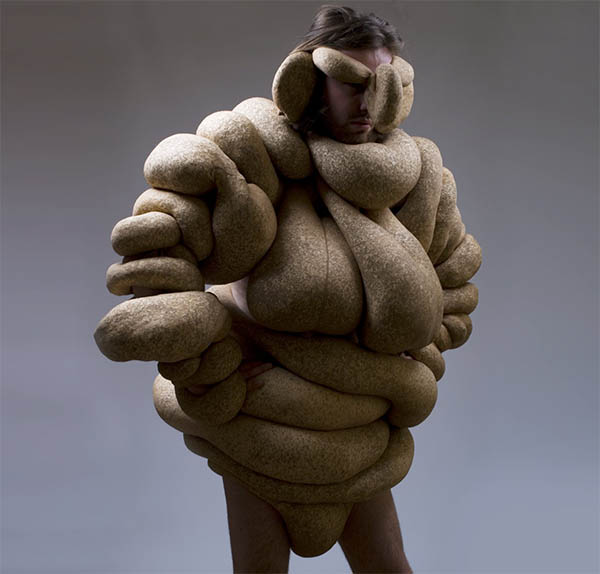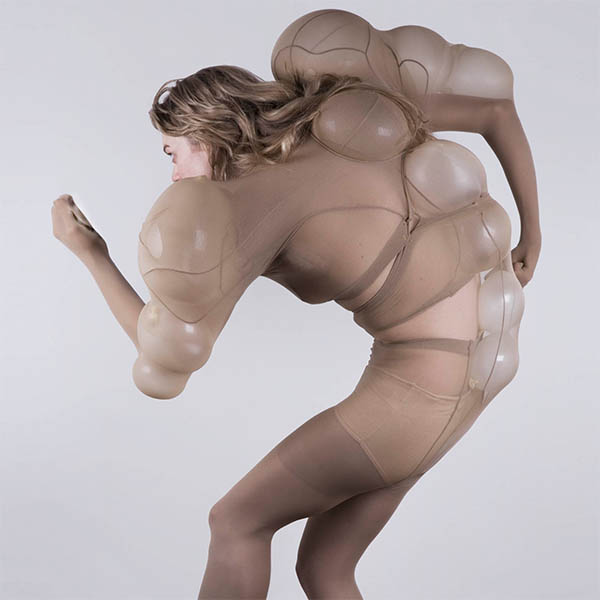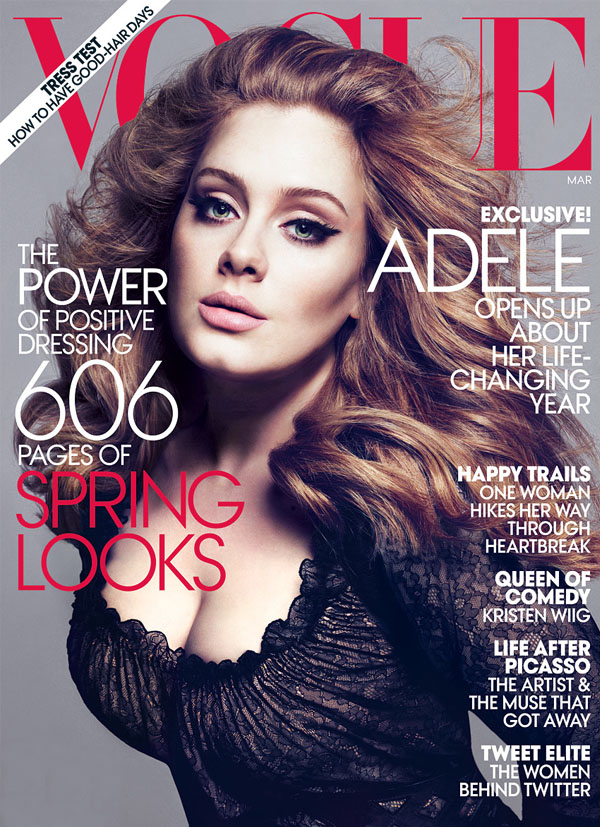With the end of my college career vastly approaching, I began to look over some of the papers I have created. Hypothetical business proposals, story analysis… the list goes on and on. Recently, I found an marketing essay that I was assigned to do a few years back, and found it pertinent to include as a blog post. Diane von Fürstenberg, the dynamic, long-term designer as well as president of the Council of Fashion Designers of America (CFDA), has recently published an autobiographical book, The Woman I Wanted to Be, that has been on my reading list long before it even came to print. My essay examines some of Furstenberg’s accomplishments as CFDA president, as well as fashion marketing.
So without further ado, please examine an analysis I truly am proud of. NOTE: The report has been edited to fit Livre de la Mode’s posting style, as well as for length.

With a foundation built on beauty, fashion utilizes a finite amount of visual imagery to capture the essence of artistry and design. However, much of the public finds messages to be too far out of reach for one’s self. Although a majority of print models are of age, runway models are often not. The use of underdeveloped, pubescent girls has been a mainstay since the ’90s and the onset of heroin chic. Although adult women are the consumers targeted, 14-17 year-old girls are those seen modeling the clothing. These girls don’t depict the typical adult female, with the small bust and barely-there hips of a gawky teenager. This has brought quite the public response. so much, in fact that in 2007 the CFDA created a health initiative. In an attempt to maintain this initiative, the council has focused on getting underage girls off the runway.
The CFDA initiative aims to, “raise awareness of eating disorders in the fashion industry [by altering] the aesthetic […] from extreme thinness to a more realistic ideal.”
However, this changing movement doesn’t dispel the reaction to the ideals of a positive body image. A study at Italy’s University of Cagliari questioned fashion models and average girls of similar age, with interesting results. 60% of models, and 34% of average had bulimic issues. 3% of models reported choosing to vomit in order to relive their body of food, while 1% of the other girls reported the same. 5.4% of models and 3.6% of the average girls had used diuretics and/or laxatives to relieve their body of food. While the fashion industry provide partial credit to these findings in the very least, they seem to get an enormous amount of flack. With mixed reactions to this news within the industry, is the industry the problem it’s made out to be? The sole being to blame?

Illusion further ensues with the use of photo manipulation, which regularly has been used to make women look thinner, younger, and blemish free. The US has instated very few laws regarding the use of photo-editing, but has received pressure both the public and other fashion-conscious nations. The British Committee of Advertising has specific sets of guidelines to prohibit advertisements that cause, “physical, mental, moral or social harm,” to those under the age of 18, as well as ads potentially causing, “widespread offense [sic] against moral, social or cultural standards.” Warning labels on manipulated images (think Surgeon General warnings on alcohol and tobacco) have regularly been proposed in both North American and European nations. By using these means to communicate that the photos are to be regarded as works of art rather than accurate depiction could potentially create less unattainable ideals for, “vulnerable consumers, particularly children and teens.”
M. Gigi Durham mentions that, “‘sexiness is relentlessly linked to particular images. […] a recent issue of <i>Seventeen</i> […] titled ‘Sexy and Seventeen’ featured a series of of slender Caucasian models in clothes that revealed their underwear […] The ‘sexy’ headline linked the body display with desirability.”
Questioning the intent of the subject, sexualization of fashion media is often problematic to the public. It makes sense to the industry’s mentality that models are often underage, yet depict women older than themselves. However, the media outlet Durham writes of clearly has a demographic related solely to teenage girls. Conversely, the fashion magazine CosmoGirl! has featured a youthful Tara Reid on the cover in a tank top stating, “being sexy doesn’t mean you have to have sex”, and the Candie’s Foundation, a clothing company extension geared towards teen and pre-teen girls was created to promote abstinence.
I find this issue quite intriguing, as I regularly regard the fashion industry as a high mode of art. That being said, endorsement of an unhealthy lifestyle is difficult to examine, but is not always the case. The industry’s use of models is worrisome; however, the use of adult women still demonstrates that models are chosen for their shape, atypical of the stereotypical body shape. These women, healthy or not, have unnatural frames — taller than average woman, with legs that go on for days and lithe torsos to match. Many of these women are healthy, while many are often not. Further, one must understand that the fashion industry thrives on many art forms. The use of photography and creation of an elaborate craft through dress is what produces sales. Like any art form, transgression creates hype. In this sense, fashion is not unlike the music or art industry.

Again, while this topic is not a new one, it is coming to a head increasingly within the past few years, notably through the CFDA’s health initiative. Further, a curvaceous Adele was featured on the March 2012 cover of American Vogue. While she may not be a size zero, she exudes a familiar sense of womanhood that Vogue traditionally regards. No less beautiful than issues prior, but one that speaks loudly of an industry’s change.
References
Abraham, Tamara. “‘Most Runway Models Meet the BMI Criteria for Anorexia’, Claims Plus-Size Magazine in Powerful Comment on Body Image in the Fashion Industry.” Editorial. The Daily Mail [London] 12 Jan. 2012: n. pag. Print.
Bixler, Susan, and Nancy Nix-Rice. The New Professional Image: From Business Casual to the Ultimate Power Look. Holbrook, MA: Adams Media, 1997. Print.
CosmoGirl! May 2002. Web.
Dumas, Daisy. “Top Model Agency Defies Industry Guidelines Banning Models Under 16…” Daily Mail. 10 Feb. 2012. Web.
Durham, M. Gigi. The Lolita Effect: The Media Sexualization of Young Girls and What We Can Do About It. Woodstock, NY: Overlook, 2008. Print
Gann, Carrie. “Parents Should Tell Kids Picture-Perfect Celebs Aren’t Real, Psychologists Say.” ABC News. ABC News Network, 30 Nov. 2011. Web.
Hellmich, Nanci. “Do Thin Models Warp Girls’ Body Image?” USA Today [McLean, Virginia] 26 Sept. 2006. Print.
Pham, Nicole. Skinny on Fashion Ads: Photo-Editing Technology. Selling Sound and Style. University of Southern California, 17 Feb. 2010. Web.
Preti, Antonio, Ambra Usai, Paolo Miotto, Donatella Rita Petretto, and Carmelo Masala. “Eating Disorders Among Professional Fashion Models.” Psychiatry Research 159.1-2 (2008) 86-94. Print
Quinion, Michael. “World Wide Words: Heroin Chic.” World Wide Words. 11 Oct 1997. Web.
United Kingdom Code of Broadcast Advertising, 4 (2010). Print.
Von Fürstenberg, Diane, and David Herzog. “Healthier Standards.” Council of Fashion Designers of America. Web. 26 Feb. 2012
Wade, Lisa. “Sociological Images.” Sexing Up Abstinence. Sociological Images, 8 Aug. 2009. Web.
Wasylkiw, L., A. A. Emms, R. Meuse, and K. F. Poirier. “Are All Models Created Equal? A Content Analysis of Women in Advertisements of Fitness versus Fashion Magazines.” Body Image 6.2 (2009): 137-40. Print
Photo References
Cover Page (center): Scandinavian Beauty, 1977, Andy Warhol
Cover Page (sides): Diane von Fürstenberg textile prints, used on designer’s Journey of a Dress book cover
Throughout: Images from Bart Hess’ (in collaboration with Lucy McRae) Evolution series, taken 2008-09; series ongoing. Lucyandbart.

I like that you titled your post illusion and reality. I had to scroll up to re-read it, because I was waiting for DvF to make another appearance in the article. But anyways :). What is this obsession with reality? Why should fashion images, runway collections, fashion movies submit to reality? Literature, films, music, painting, theater… Those outlets of artistic expression never had to worry about reflecting reality or damaging sensibilities of audiences. If anything, I would ask for more illusion, more delusion, more creativity, more experimentation from the arts than is currently available to my senses.
If I see the picture of a transvestite on the cover of a magazine, I don’t go assuming that the magazine is telling me to put a skirt on. If that magazine had to explicitly mention this on its cover, then I take it as an insult to the intelligence of its readers.
In my opinion, it’s the lazy argument that those who don’t read hold against the industry. If I’m going to judge a magazine by its cover without reading its articles, then my judgement is not really valid. I think, on the contrary, that it is possible to measure the endorsement of a magazine to healthy lifestyle by reading the articles inside. A magazine is a combination of articles on health, body-care, advertisements of chocolate, fatty cheeses, editorials of skinny models, paparazzi shots of celebrities caught looking like normal human beings, reviews of fiction books talking about average humans rather than superhumans. It’s all that. If the critics single out a couple of fashion images, it’s their right, but I don’t give it any credibility.
LikeLiked by 1 person